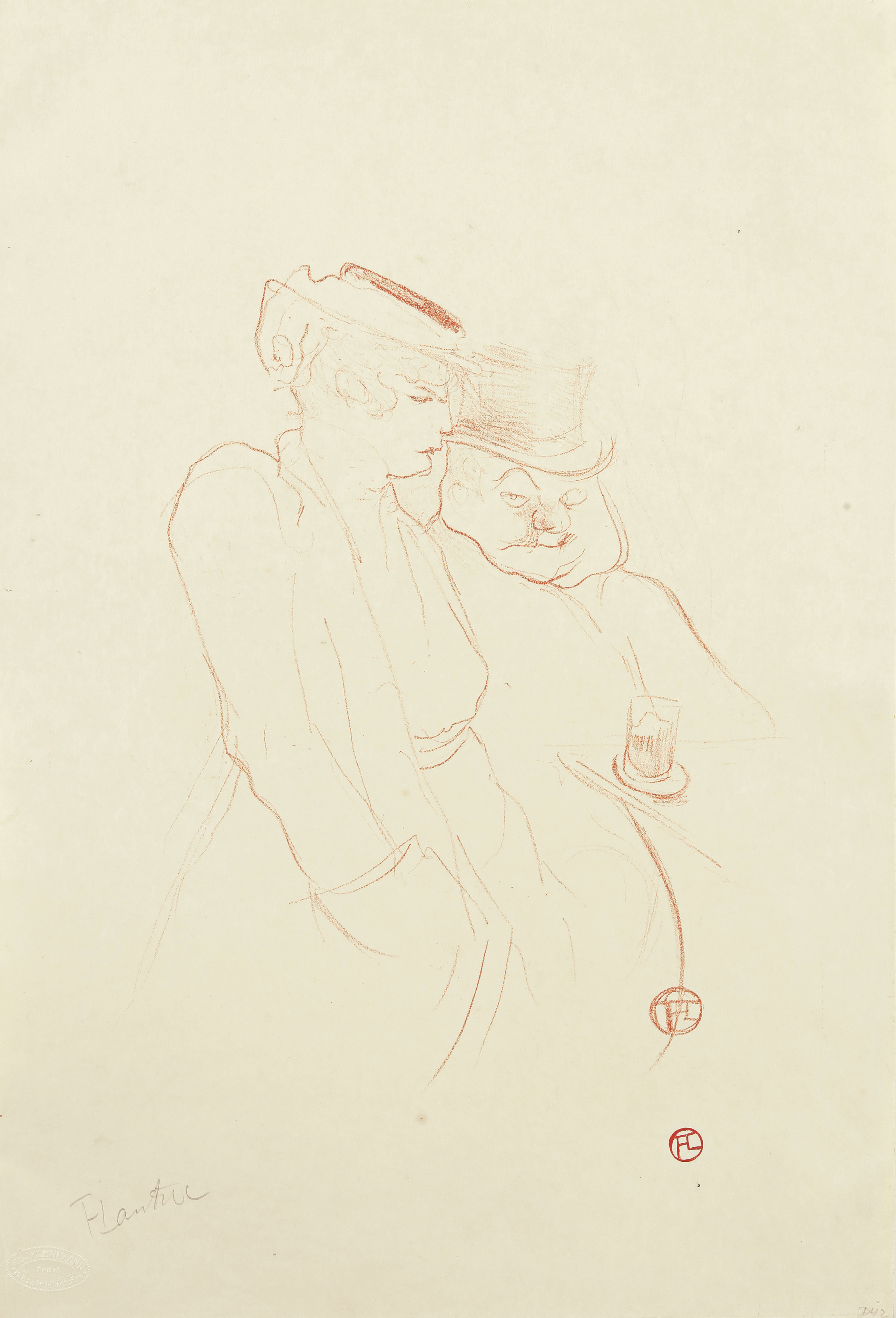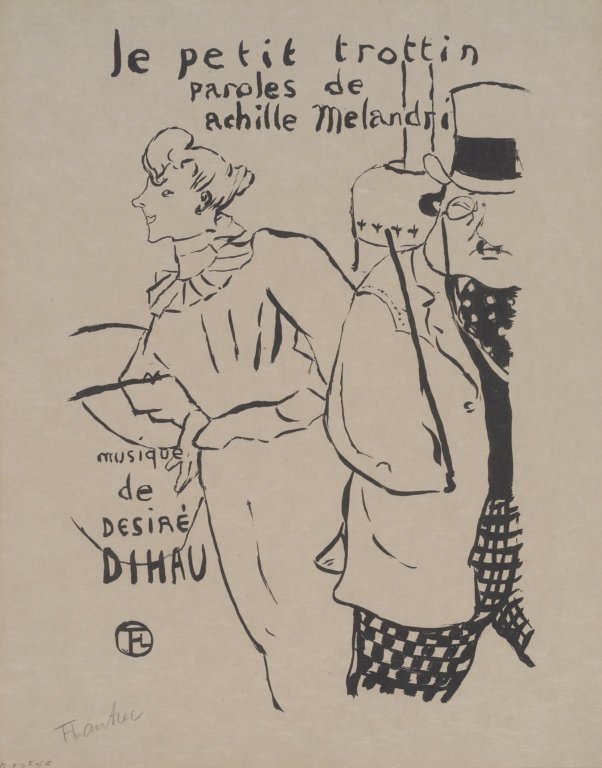
Henri
de
Toulouse-Lautrec
Toulouse-Lautrec
 |
En Quarante — Hustling
En Quarante — Hustling
lithograph, 1893, on cream-yellow simili-japon paper, the only known state, an exceedingly rare and exceptional trial proof impression, printed in sanguine, signed in pencil by the artist (left), stamped with the artist's red stamp (Lugt 1338) and the Kleinmann Paris drystamp (Lugt 1573), an unnumbered impression, with full margins, one of only two known proofs printed in sanguine, prior to and aside from the edition of 100, traces of old hinges in the margin, verso, otherwise in pristine condition
L. 285x235 mm., S. 462x312 mm.

